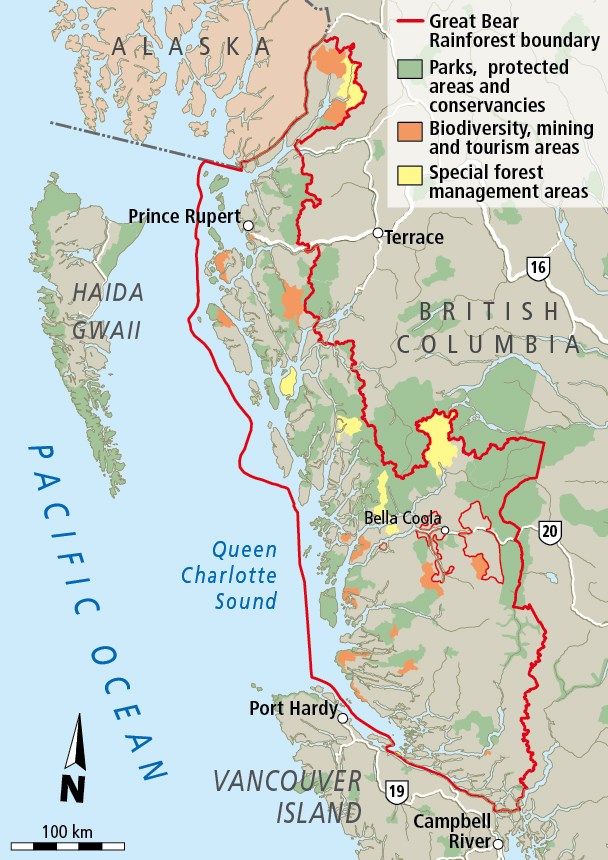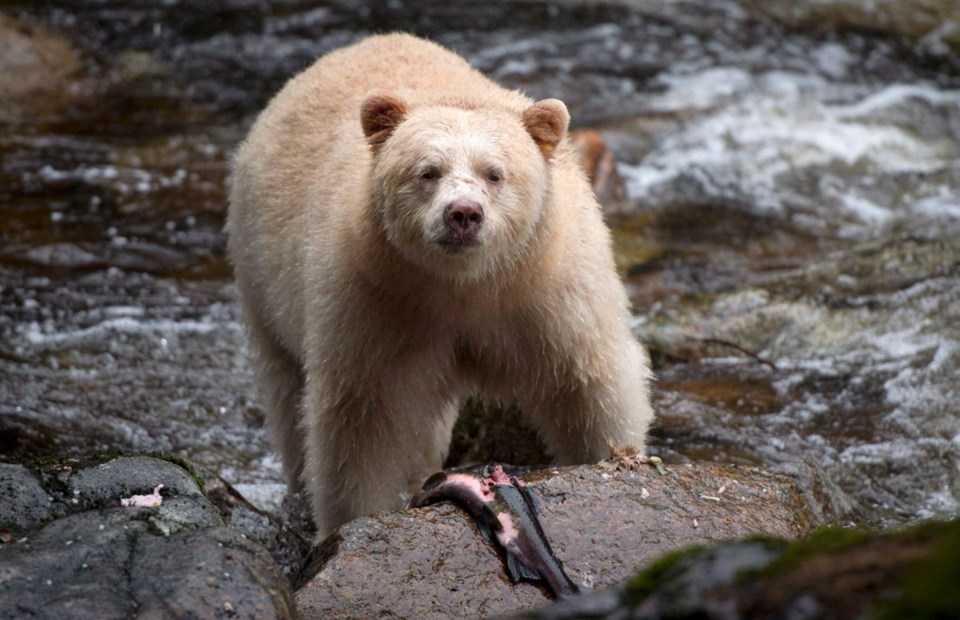VANCOUVER — Bitter opponents faced with the realities of economics and endless protests shook hands Monday on a truce 20 years in the making to protect much of British Columbia’s magnificent Great Bear Rainforest.
The protections limiting logging and banning the commercial grizzly hunt were helped by the spiritual presence of the rare white bear that roams B.C.’s central coast forests amid 1,000-year-old cedars.
“We kind of all grew up and understood we needed to work together to find solutions,” Rick Jeffery, the president of the Coast Forest Products Association, said Monday after the agreement was released. “One of the successes and magic about today is we’ve demonstrated to the world that collaboration and finding solutions can work.”
Premier Christy Clark announced the deal between First Nations, environmental groups, forest companies and her government to protect 85 per cent of the largest intact temperate rainforest in the world from logging. The Great Bear Rainforest is located on B.C.’s remote coast about 700 kilometres northwest of Vancouver.
It’s 6.4 million hectares and stretches from the Discovery Islands northward to Alaska, and more than half is covered by ancient forests. The agreement ensures 3.1 million hectares of forest ecosystem are permanently off limits to logging.

Environmental groups, First Nations and the forest industry admitted the hard-fought agreement was forged in conflict dating back to the 1990s, but painstaking negotiations where everybody knew there was no turning back sealed the deal.
“Other folks in other parts of the world in forestry and other natural resource sectors could do a lot to learn by what happened in this place,” said Jeffery.
ForestEthics Solutions Val Langer said the agreement emerged out of the realization “one of us was going to die.”
B.C.’s pulp mills and lumber companies were feeling pressure from buyers who didn’t want to buy wood from protest zones and the environmentalists were told to find solutions that didn’t involve constant battles, said Langer.
“The change between the environmentalists and forest companies happened when the marketplace threw down the challenge to us and said, ’We need you guys to work it out,’ ” she said. “We just knew we couldn’t maintain this and we couldn’t be in conflict forever.”
Jeffery largely agreed, saying customers didn’t want to sell products labelled as destroyers of the environment, despite industry attempts to explain their forest practices.
“They just said to us, ’We want the conflict gone,’ ” he said.
Clark’s government will introduce legislation this spring that enshrines the deal and includes benefit-sharing agreements with area First Nations.
The plan also ends the commercial grizzly bear hunt and protects habitat for the marbled murrelet, northern goshawk, mountain goat and tailed frog.
Langer said the Great Bear Rainforest’s white kermode bear, widely known as the spirit bear, became the galvanizing symbol of the area’s other-worldly quality and the necessity for its protection.
She said the eco-management deal to protect the area is complex and comprehensive but the spirit bear symbolizes its meaning and generational value.
“It’s iconic,” she said. “What is simple is the understanding of what is at stake and the spirit bear is the icon of what’s at stake.”
Twenty-six area First Nations signed the agreement.
Nanwakolas Tribal Council president Dallas Smith said three B.C. premiers, 94 First Nations chiefs and 183 councillors were involved in Great Bear Rainforest talks over the past two decades.
“It’s frustrating for us as First Nations people that it took the white spirit bear to draw the international attention that it did when my communities have been living in third-world conditions from the start,” he said.
“But we have a choice. We can either get mad about that or we can be proactive and use the opportunity to bring some awareness to the issues that our communities face.”



